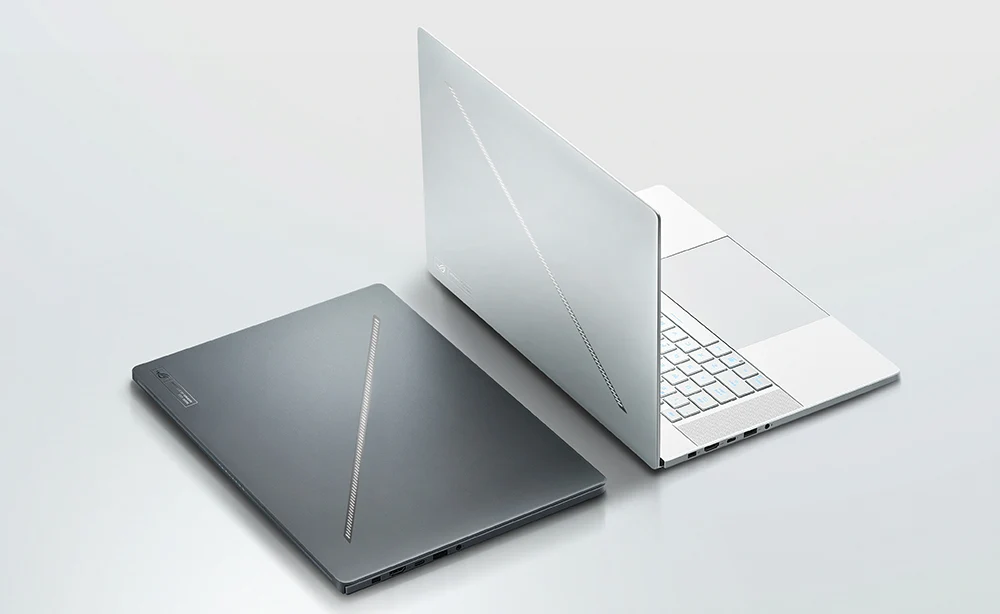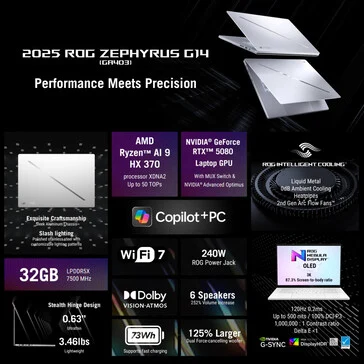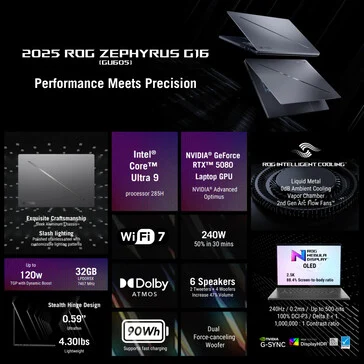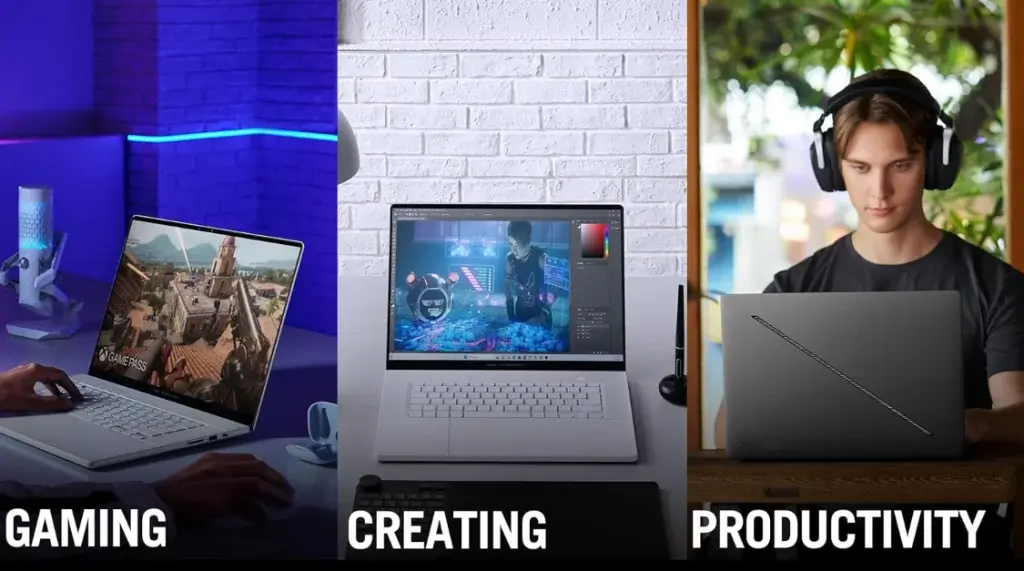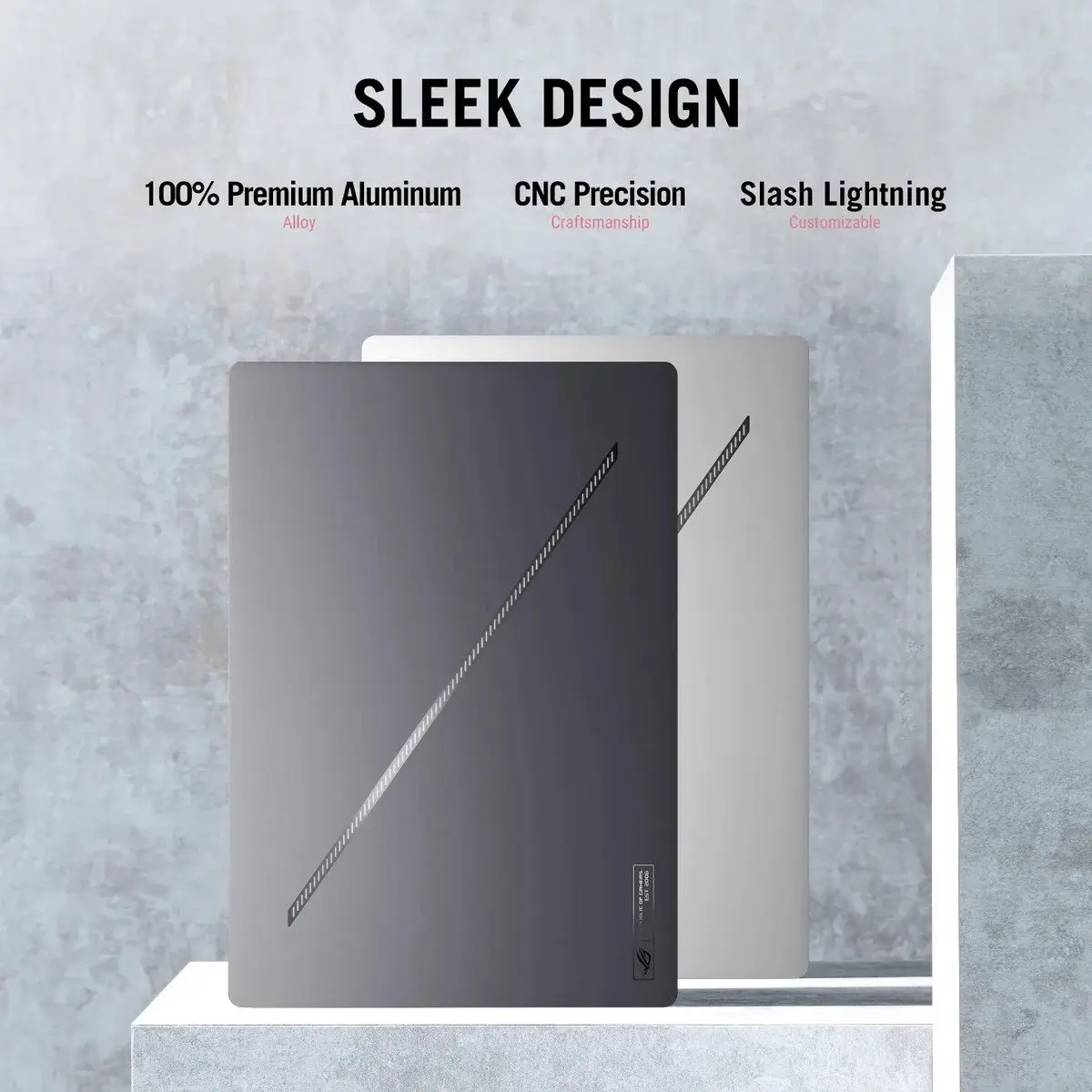Key Takeaways
1. Initial laptops with GeForce RTX 5090 aim for high TGP values of 160 W or more, showcasing peak performance.
2. The Asus ROG Zephyrus G16 GU605CX has a lower TGP of 120 W, positioning it as a midrange RTX 5090 alternative.
3. The 120 W RTX 5090 in the Zephyrus lags 25-30% behind the 175 W RTX 5090 in the SCHENKER Neo 16.
4. In gaming scenarios, RTX 4090 laptops outperform the Zephyrus by 5-35% in popular games without DLSS enhancements.
5. The Zephyrus 16 is slimmer, lighter, and more stylish, but its lower power limit affects GPU performance, affecting cost vs. performance trade-offs.
Some of the initial laptops featuring GeForce RTX 5090 graphics are aiming for high thermal design power (TGP) values of 160 W or more, showcasing the peak performance of the mobile GPU. In contrast, the new Asus ROG Zephyrus G16 GU605CX sets its sights on a lower TGP of just 120 W, positioning itself as a “midrange” RTX 5090 alternative. Even though it remains a solid gaming laptop, its graphics performance is noticeably affected, leading to a situation where many RTX 4090 laptops can actually outpace the Asus.
Performance Comparison
In our latest review of the Zephyrus model, along with the accompanying graphs, it’s clear that the 120 W RTX 5090 in the 16-inch Asus lags about 25 to 30 percent behind the 175 W RTX 5090 found in the 16-inch SCHENKER Neo 16. This performance gap is so significant that even average RTX 4090 laptops in our database can exceed the Zephyrus by as much as 10 percent based on 3DMark tests.
Gaming Experience
The situation worsens when diving into real gaming scenarios, as the mobile RTX 4090 proves to outperform the RTX 5090-equipped Zephyrus by even larger margins, even at 1080p resolutions. Popular games such as Final Fantasy XV, Baldur’s Gate 3, Cyberpunk 2077, Monster Hunter Wilds, and Assassin’s Creed Shadows can run anywhere from 5 to 35 percent faster on older RTX 4090 laptops when compared to the newer Zephyrus, without the aid of DLSS enhancements.
It’s important to point out that the new Zephyrus 16 is more slender, lighter, and more stylish than many other 16-inch gaming laptops, which required a tighter power limit for the GPU. Whether this trade-off is worth it in terms of cost versus performance ultimately rests on the buyer’s preferences.

